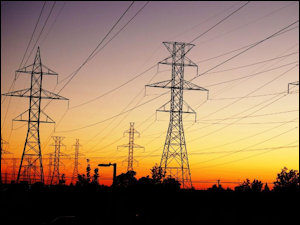New power plants are pretty useless unless they are connected by new power lines. The debate over who pays for those tall towers and miles of cable can be just as divisive as the fight over who pays for a proposed nuclear plant or offshore wind turbines.
Bottom line, of course, the customers ultimately pay. But which customers? Should it be those most reliant on that individual transmission line, everybody within the utility, or should it be all the customers within all the utilities inside a regional transmission organization?
As Virginians who are part of the PJM Interconnection, when should we be forced to pay for power lines in Pennsylvania or Ohio? The purpose of PJM is to move power between all the states involved, carefully maintaining the proper load on the highly vulnerable grid. There are certainly times when a new line is so crucial to reliability, we should all pay.
But then there are times when we shouldn’t. One of those times might be when a state makes a political decision that results in a massive need for new transmission lines. And an excellent example of that problem is Virginia’s generous tax incentives for data centers which have sparked a massive growth in demand for both new generation and new power lines to serve them.
These are the fun decisions made by the Federal Energy Regulatory Commission (FERC) in Washington. A recent decision on how to allocate the transmission costs needed to connect New Jersey offshore wind projects gave Virginia-based FERC Commissioner Mark Christie another opportunity to provide a lesson and a lecture on the rising wave of electricity costs spurred by the war on fossil fuels.
He does it with one of his “I concur with this decision but” dissertations, which might be better read than the majority opinions. The New Jersey lines, needed because of that state’s decision to build wind projects that will not add PJM-wide reliability (on the contrary), are examples of “public policy” lines which should not be paid for by customers elsewhere.
But in debating that particular FERC decision, the Maryland authorities raised a point about Virginia. The data center explosion in this state, fueled by subsidies running to billions of dollars of avoided local tax, is also going to have an impact on PJM reliability as a whole, and will require regional transmission investments across other states. Under current FERC policy, those will be considered reliability projects, not public policy projects.
Christie writes that the Maryland authorities “make a logical argument to consider the necessary construction of reliability lines in PJM due to load growth from the explosion of data center development in Virginia, as driven – at least at the margin – by Virginia’s own public policy of subsidizing data centers.”
In a footnote he adds that the tax breaks are not the only subsidy for the data centers.
To the extent that Dominion, the load-serving utility in this part of Virginia, socializes the relatively large cost of network upgrades needed to serve individual data centers across all Dominion customers, that could be considered by some to be another subsidy, given the extraordinarily large amount of power consumed by a data center relative to those other customers (which also drives costs for new power resources). But these issues are policy questions for Virginia policymakers, as these costs are not allocated regionally but are confined to Virginia.
Then Christie mentions a case where it is the Virginia Attorney General’s consumer lawyers questioning whether it would be fair to charge Virginians because Maryland decided to shut down a major coal plant. The related transmission changes to shift the load will clearly be about PJM reliability, but it was a public policy decision that put reliability in jeopardy.
These comments logically raise the question whether a law such as Maryland’s mandate to close fossil-fueled generation units located in Maryland has a more direct, intentional and causal impact on the need for new reliability transmission lines than state tax subsidies to high-load customers such as data centers. At a minimum, both Maryland and Virginia state commenters make arguments that are worthy of serious consideration.
He cites another case document addressing the Maryland coal plant closure:
Let me emphasize that the State of Maryland, within its sovereign police powers, clearly has the authority to mandate any particular mix of generating resources it prefers. Maryland’s new climate law is well within its inherent authority to enact….
But if the resulting transmission projects under protest in this (regional transmission expansion plan) filing are caused more by Maryland’s policy choices than by organic load growth and economic resource retirements, then a salient question that may be asked is whether these transmission projects are more accurately categorized as public policy projects, essentially the same as the transmission upgrades caused by New Jersey’s offshore wind projects?
Christie concludes by calling for FERC to take on the issue, which of course extends to all parts of the country where either state economic development gamesmanship or state-specific generation mandates are driving billion-dollar transmission upgrades. It should address:
What is the proper definition of a public policy transmission project? Does the definition of public policy transmission project need to be changed for purposes of regional cost allocation? How should public policy transmission projects be cost-allocated in a multi-state (regional transmission organization)? In my view the states themselves need to be at the forefront of deciding these questions, as it is their own state policies that are largely making these questions unavoidable, as these two recent PJM cases graphically illustrate.


Leave a Reply
You must be logged in to post a comment.